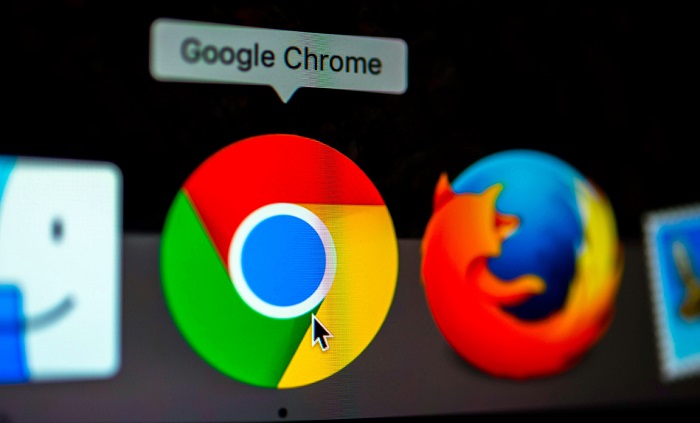Basic Input Output System or the BIOS is a ROM chip found on motherboard. It allows the user to access and set up the computer at the most basic level. The BIOS facilitates communication between the operating system and the hardware. Updates for BIOS are release occasionally just like drivers and software.
Contents
What is BIOS and How to Do Dell BIOS Update on Your Dell System
There should be a good reason for updating the BIOS, also called flashing the BIOS. The user should only update the BIOS when there is a specific issue. For example, compatibility while installing new hardware that is resolvable through BIOS update.
Read Also:
- Smoking Marijuana Lead To Breakthrough COVID Cases, Study Says
- 14 Best Alternatives to PrimeWire for Watching Movies and TV Shows
Solution 1: Using Windows Operating System
Step 1: First of all, check which version of BIOS is currently running on the system of the Dell computer/Laptop.
Step 2: Secondly, press the Windows key + R together. Type msinfo32 in the Run window and press Enter. The System Information window will open. Make sure System Summary is selected in the left pane of the window. Locate BIOS Version/Date in the larger right pane. Note the value against it which is the BIOS version.
Step 3: Go to www.dell.com/support/drivers. Usually the required text box on the top or bottom of the desktop/laptop. Enter the Service Tag or Express Service Code there. OR, press Windows key + R. Type cmd in the Run dialogue box and press Enter. Type the following command in the black window:
wmic bios get serialnumber
Step 4: To run the command, press Enter.
Step 5: Under “Serial Number” note down the characters which is the Service Code. Under Service Tag or Express Service Code’s text box on the webpage type it. Then click on the option submit. Now, under Product Support, the system model should appear.
Step 6: Select “Drivers and downloads” on the left and scroll down. Next, click “Find it Myself” under “Optimize your system with drivers and updates. Check if the correct Operating System is listed next to View all available updates. If not so, click Change OS and select the correct Microsoft Windows Operating System currently installed on the computer.
Step 7: Click on BIOS in the drop-down menu under “Refine your results:” to place a check on it. To expand its details, click on BIOS available for download in the search results. Checks whether the BIOS version and date is newer than the one currently installed and then click Download File to download it. Open the downloaded file after saving and closing any running applications.
Step 8: Follow the on-screen instruction after clicking Yes to the User Account Control warning message. The confirmation and warning messages may vary to the system model. Click yes and OK for them. During the updating process do not turn off the computer or laptop. Check to see if the battery is present in the laptop and the AC adapter is connected with it the whole time.
Solution 2: Using Bootable Flash Drive
Booting the flash drive can help if the user can not log onto a system and still have to update its BIOS. Select USB in the proper boot order to continue. Power on the target system to know the current BIOS version installed. Then keep pressing F2 until the BIOS setup appears. The BIOs version will come next to BIOS revision.
Step 1: Go to www.dell.com/support/drivers from any accessible system to check if an updated BIOS version is available.
Step 2: Usually the required text box on the top or bottom of the desktop/laptop. Enter the Service Tag or Express Service Code there.
Step 3: An alternative to the above step is to scroll down and click “View products” under “Browse for a product.” Select the model of the desktop or laptop accordingly.
Step 4: Use the method described above in solution 1 to check if a newer version of the BIOS is available. Click Download File to download it if it is available otherwise the latest BIOS version is already present. In order to make it bootable with the system, connect the Flash Drive. After this, hold Windows Key + E to open windows explorer. From the Flash Drive, back up the data.
Step 5: From this link, download Rufus to make the Flash Drive bootable. Then open the downloaded file.
Step 6: Select the correct Flash Drive under Device. Next, under the File system, select FAT32 in the drop-down menu. After this, click on FreeDOS to “Create a bootable disk using”. Click Start.
Step 7: When the process is complete, click Close. Next, note down the exact name of the updated BIOS file after copying it to the Flash Drive.
Step 8: After connecting the Flash Drive to the target system, power it on and keep tapping F12 until the Boot menu appears.
Step 9: After highlighting the flash drive/USB from the Boot menu, press Enter.
Step 10: Type C: and press Enter in the command prompt window that appears.
Step 11: To list the files on the Flash Drive press dir.
Step 12: Press Enter after typing the exact filename of the BIOS update file, e.g., E5440A13.
Step 13: Lastly, follow the on-screen instruction. During the updating process do not turn off the computer or laptop. Make sure the battery is present in the laptop and the AC adapter is connected with it the whole time.
Read Also:
Conclusion
Updates for BIOS fixes or enhances features and aspects of the system’s performance. Installing a wrong version or a wrong update can make the system unusable. Therefore be careful while using the above methods to update the BIOS.






![Err_Connection_Reset Error in Chrome [RESOLVED] Fix Err_Connection_Reset Error in Google Chrome](https://howandwow.info/wp-content/uploads/2019/09/Fix-Err_Connection_Reset-Error-in-Google-Chrome.jpg)
![DNS_Probe_Finished_No_Internet Error [RESOLVED] Fix DNS_Probe_Finished_No_Internet Error](https://howandwow.info/wp-content/uploads/2019/09/Fix-DNS_Probe_Finished_No_Internet-Error.jpg)
![Err_Cache_Miss in Google Chrome Error [RESOLVED] Err_Cache_Miss in Google Chrome Error](https://howandwow.info/wp-content/uploads/2019/08/How-to-Fix-Confirm-Form-Resubmission-Error.jpg)









![Steam Missing File Privileges Error [RESOLVED] How to Fix Steam Missing File Privileges](https://howandwow.info/wp-content/uploads/2020/07/How-to-Fix-Steam-Missing-File-Privileges-Error-100x70.jpg)
![SIM Not Provisioned MM#2 Error [RESOLVED] SIM Not Provisioned MM#2](https://howandwow.info/wp-content/uploads/2020/03/SIM-Not-Provisioned-MM2.jpg)








